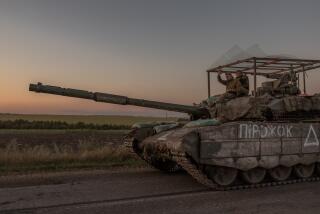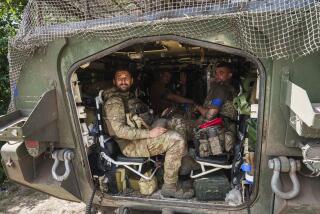Four years after Russia annexed Crimea, the peninsula remains in limbo
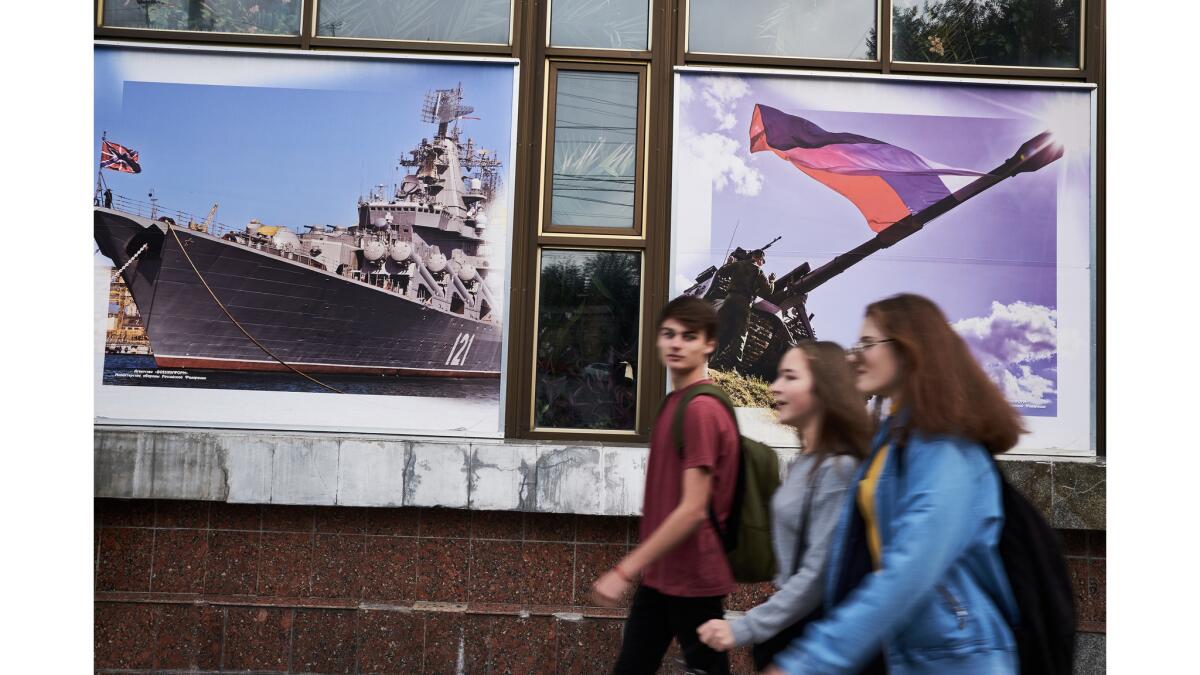
- Share via
Reporting from Simferopol, Crimea — The wind whips across a narrow, sandy strait, carrying the salty smell of the Sea of Azov. Ukrainians stand in line, sometimes for hours, at the makeshift checkpoint separating mainland Ukraine from Russian-annexed Crimea.
One by one, they hand their passports to the border guards, who work out of an open shipping crate-turned-border-post.
For the record:
9:05 a.m. Jan. 28, 2019An earlier version of this article said a 12-mile bridge from the Russian mainland to Crimea cost $4 million. It cost about $3.7 billion.
“I’ve stood here in February with my 8-year-old son for two hours in slush and ice that was ankle deep,” said Anna Sikorskaya, 31, who fled Crimea two years ago for the Ukrainian capital, Kiev. She arrived at the Chonhar border crossing one day late last year after a 13-hour train ride from Kiev. She was traveling to see her parents in Simferopol, the Crimean capital.
Before the Kremlin annexed the Crimean peninsula in March 2014, entering was as easy as crossing a state line. Today, it’s an arduous journey across a 2.7-mile border strip that can take half a day.
While few countries and no major international organizations recognize Crimea as part of Russia, Ukraine has had to bow to the superior power of its neighbor, which last year completed a 37-mile fence topped with barbed wire and motion sensors that runs the length of the border. Almost five years after the annexation, the consequences of Russia’s land grab still reverberate in unsettling and often absurd ways.
Ukrainians must pass through their own government’s checkpoint to enter Crimea, even though most of the world considers it to be Ukrainian territory. They then carry bags and children on foot across a quarter-mile of no man’s land. A shuttle bus plies the rest of the potholed road to the Russian checkpoint for 30 cents. There’s another wait at Russian passport control.
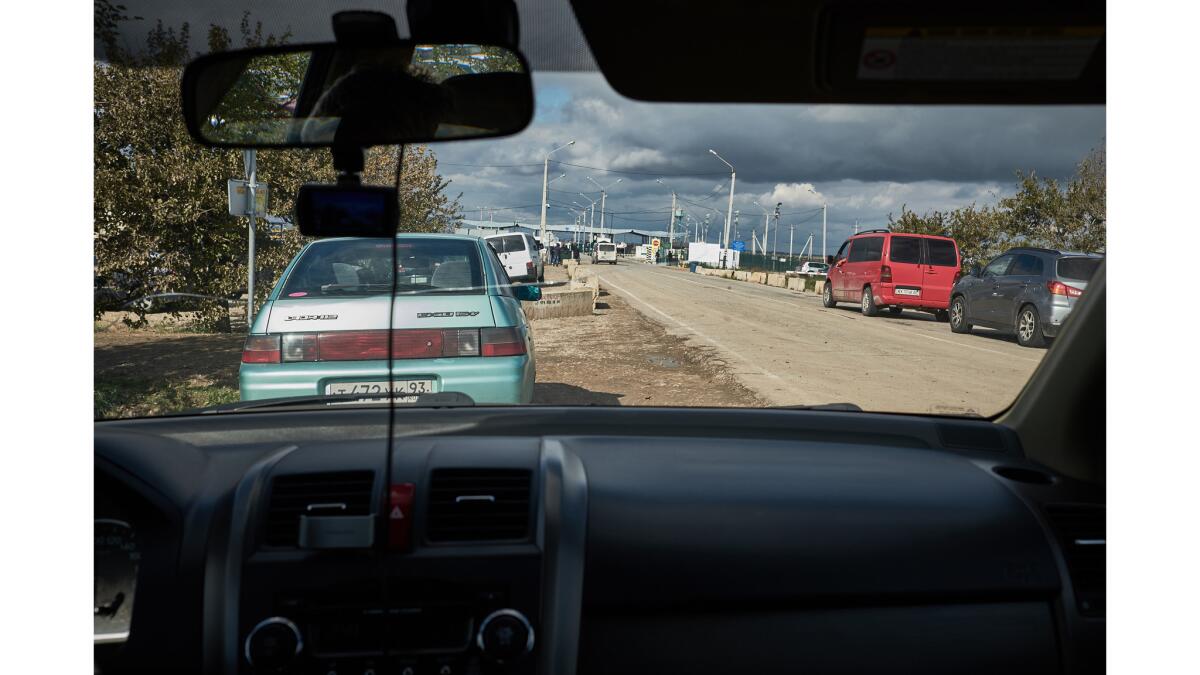
Ukraine has cut off cargo and public transportation at the border. Passenger cars with Ukrainian license plates can enter, but Ukraine won’t let cars with Russian plates cross the border. Ukrainian cellphone service doesn’t work at the border.
“Does anyone have a phone I can use? I need to call my nephew to tell him I’m safely across,” an elderly Ukrainian woman asked a group of travelers standing in line at the Russian border. Someone handed her a phone with a local, Crimean number.
“I don’t know how people do this,” she mumbled under her breath as she fumbled with her bags and moved along in the line.
PROMISES
Russian President Vladimir Putin promised prosperity for Crimeans. The Kremlin has invested $5.3 billion in infrastructure projects, including roads, hospitals and schools. Pensions and wages for government budget workers have increased, as Putin promised. But prices for goods and services, including electricity and water, have increased along with them.
“Those who were all ‘Hurrah! Hurrah!’ after the annexation have already quieted down,” said Alexei, a tour guide in the Black Sea resort of Yalta. Like many in Crimea, the 56-year-old didn’t want to use his last name out of fear of the local Russian security services.
Under Ukraine, Crimea’s economy was stagnant, and many hoped that development would grow under Russia. But Western sanctions prohibit foreign investment in the peninsula’s aging tourism infrastructure and deter non-Russian travelers from coming to see the breathtaking views or swim in the clear blue waters of the Black Sea.
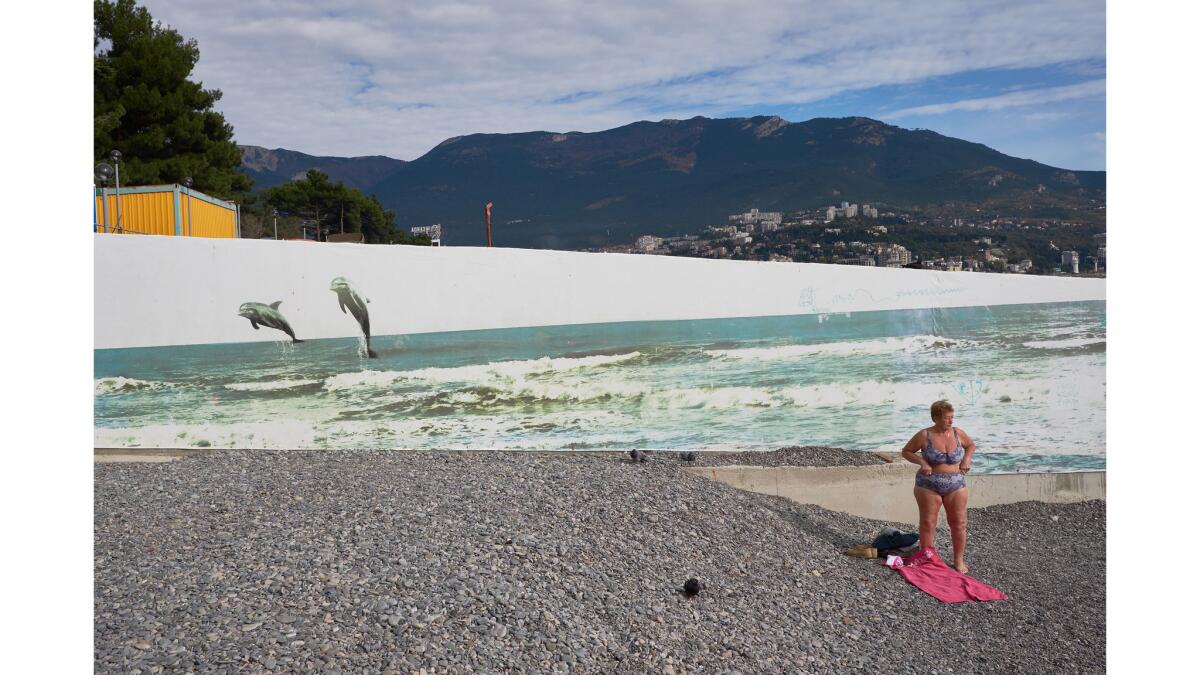
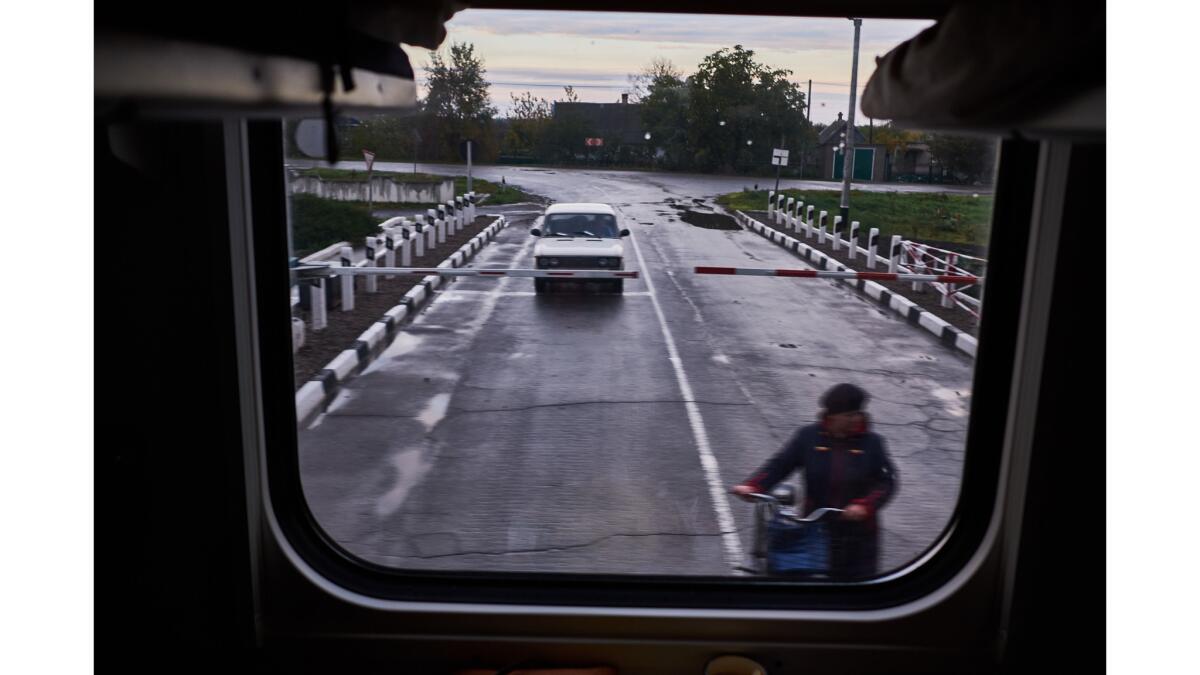
This means the Russian government is the largest — if not the only — real investor in Crimea.
Unfinished construction sites dot the landscape between the massive, Soviet-era tourist hotels that dominate the cliffs and shoreline of Yalta and other major resort towns. After annexation, many new hotel construction projects stopped because investors disappeared.
Russian state tourism officials say visitor numbers have improved after plummeting immediately following annexation. Billboards in Moscow and other Russian cities advertise package tours to Crimea. This year, Crimea had 6 million visitors, 85% of whom were Russians. Many arrived from the Russian mainland via the Kremlin’s $3.7 billion, 12-mile bridge, which opened in May. Ukrainian vacationers returned this year, albeit at a fraction of the rate they used to before 2014.
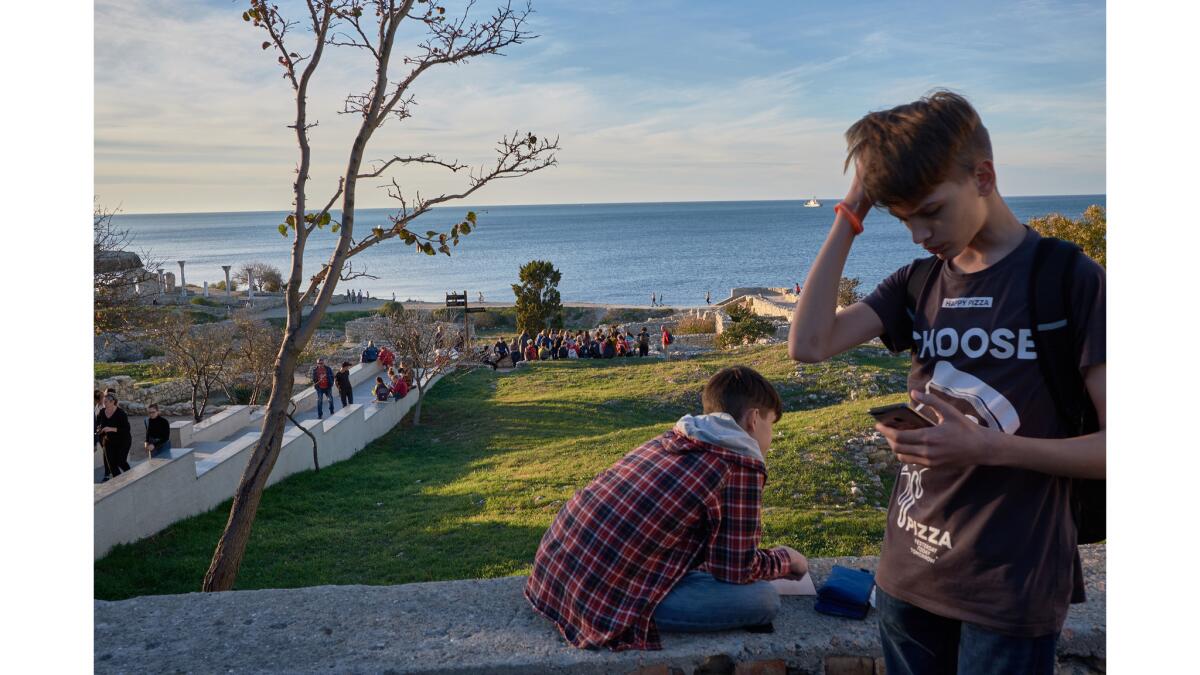
“Things have gotten worse, in my opinion,” Alexei said. “No one has any money in mainland Russia or here. So, the Russians come, but they don’t spend much money.”
Foreign tourism has dropped significantly. “I haven’t spoken to a foreign tourist in about three years,” he said.
Tourists who do find their way to Crimea struggle to pay for services: Only local banks can operate in Crimea, meaning getting cash from an ATM is limited to those who have an account. International credit cards like Visa and MasterCard are accepted, but big Russian companies and banks won’t invest in Crimea out of fear of getting caught in the next round of sanctions.
In early November, the U.S. Treasury Department announced another round targeting eight Russian businesses operating in Crimea, several of which were resort complexes.
That same month, Russia reaffirmed that it had no intention of letting Crimea go when it seized three Ukrainian naval vessels attempting to cross into the Sea of Azov, just off the coast of the peninsula. The incident sparked international condemnation.
“There’s pluses and minuses after annexation,” said Sergei, who opened a craft beer and burger bar in Simferopol with two friends from Moscow this year.
So far, business has been steady for their bar, on the second floor of a renovated, pre-Russian Revolution building overlooking Karl Marx Street, Simferopol’s central pedestrian area.
Sanctions have made some products hard to get in Crimea, and almost everything is as expensive down here as it is in Moscow, he said. Sergei asked that his last name not be used out of fear that the Ukrainian government would label him a separatist or traitor. Ukraine still sees Crimea as its land, and those Ukrainians who took Russian citizenship are frowned upon in Kiev, yet another reality of living in Russia-occupied Crimea.
“They can be kind of crazy in Ukraine about this stuff,” Sergei said, adding that he still travels to Ukraine frequently.
“Some things under Ukraine were easier; it was easier to figure out how to solve problems,” Sergei said. Now, under Russia, there are new laws and regulations to figure out, he said.
“You realize that Russia is like a totally new lifestyle,” he said.
UNWANTED REALITIES
Russian annexation brought realities to Crimea that may have been overlooked by those who voted for it in March 2014. Russia has imposed the same restrictions on political freedom as elsewhere in Putin’s tightly controlled realm.
The Kremlin’s security services keep a watchful eye on dissenters and regularly conduct home searches of those who openly criticize the Kremlin’s occupation. Russian authorities have persecuted pro-Ukraine activists, journalists and members of the Crimean Tatar community. Tens of thousands have fled the peninsula to avoid arrest or persecution.
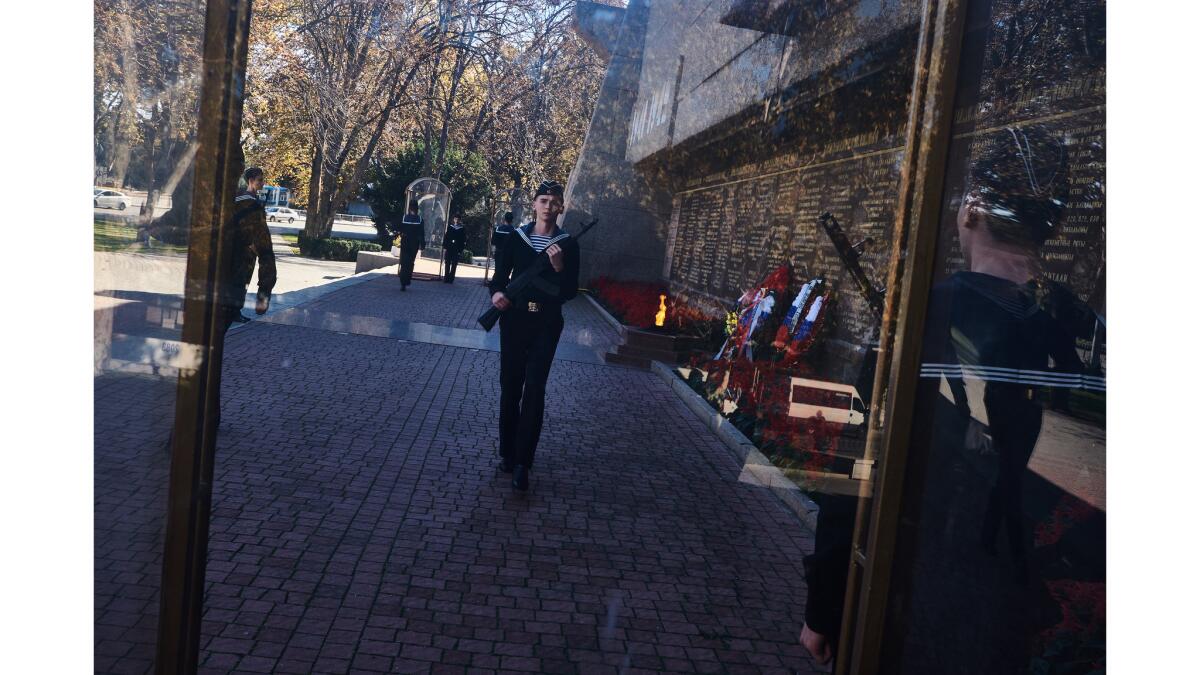
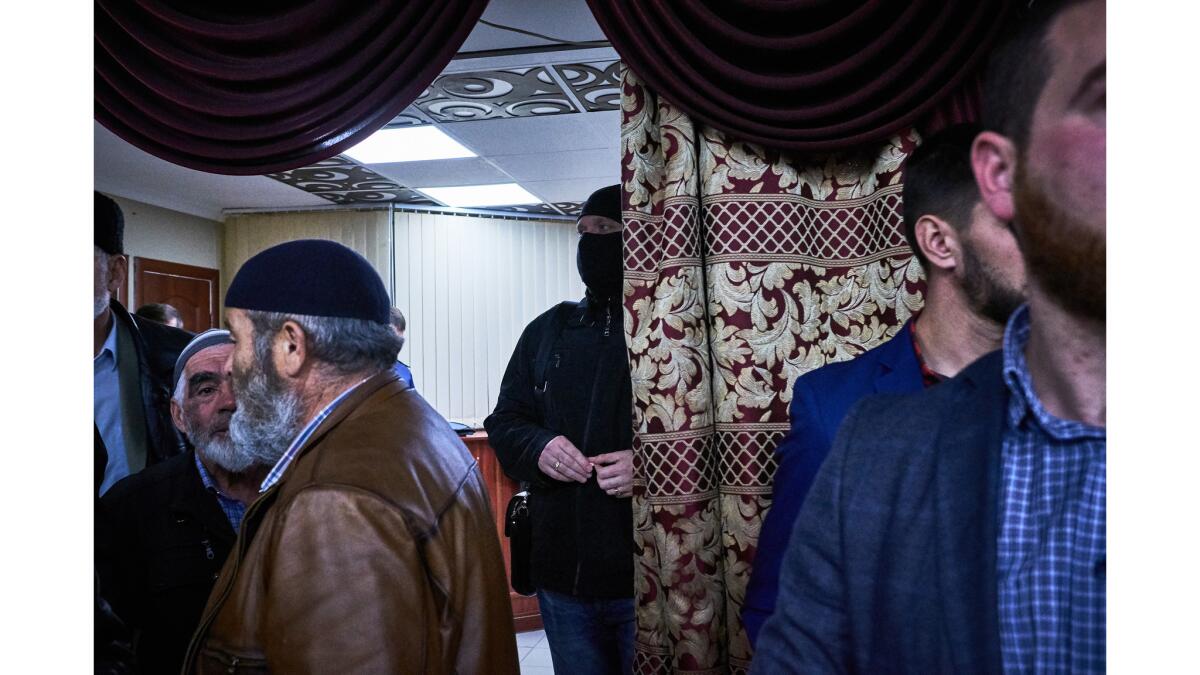
If travel to Crimea for foreigners is bureaucratic, international travel for Crimeans can be a logistical headache. Sanctions prevent international airlines from operating out of Simferopol’s newly renovated airport. Flights go to and from Russia only.
“Just to go to Istanbul, we have to fly two hours north through Moscow, and Turkey is really only just across the Black Sea,” said Oksana, 28, a translator in Sevastopol, who didn’t want her full name used out of fear of reprisal.
Then there’s the complication of getting visas to the U.S. or the European Union countries if you have a Russian passport with a Crimean address. Ukrainians can now travel to the European Union visa free, but Russians still need visas, which means they must go to Moscow to visit a European embassy.
Oksana said she had always dreamed of visiting America. But with a Crimean registration in her Russian passport, she doubted she would be given a tourist visa.
“We’re supposed to be part of Russia, but Western embassies won’t give us visas with a Crimea address in our passports,” she said.
There may be at least one chance at an international flight from Simferopol coming in the future. Last month, a Crimean delegation flew to Syria to discuss opening tourism channels between the two countries, including a direct flight to Damascus.
“Living here,” Oksana said, “is like living in a parallel universe.”
Ayres is a special correspondent.
More to Read
Sign up for Essential California
The most important California stories and recommendations in your inbox every morning.
You may occasionally receive promotional content from the Los Angeles Times.

